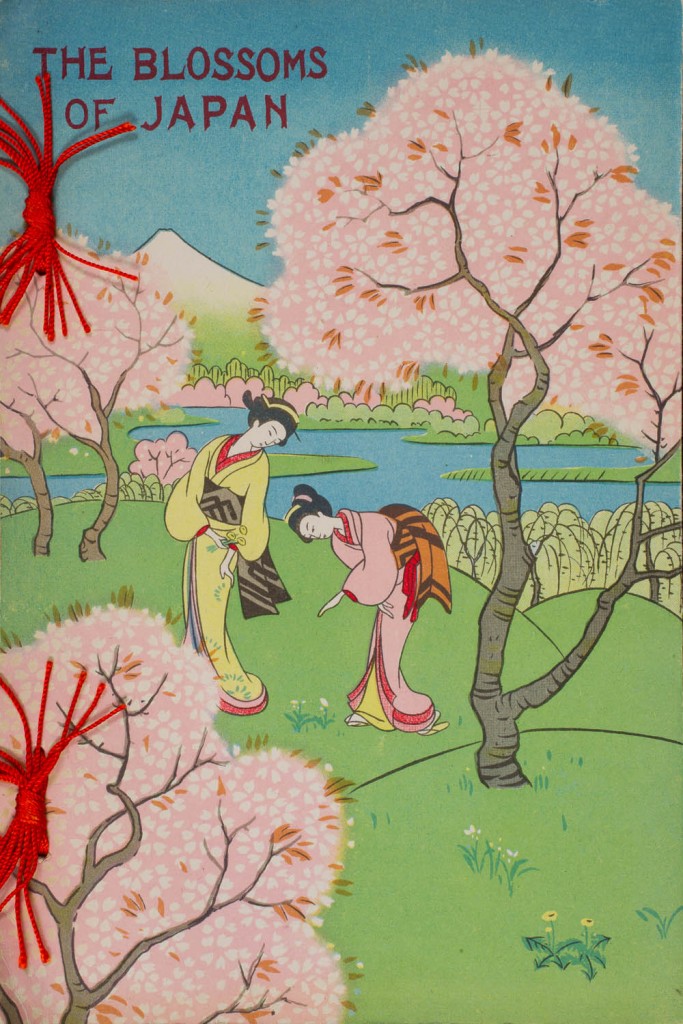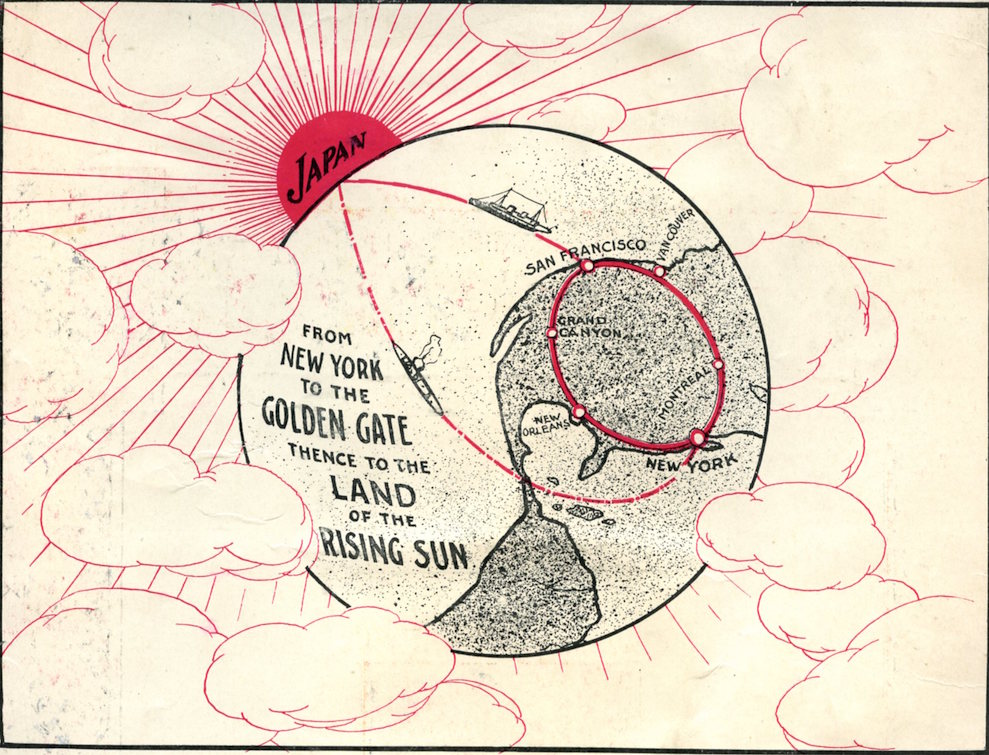On the first official day of spring (one month ago today), I thought that I would post about an appropriate object from the collection to commemorate the day. The small, softcover booklet with stab binding that you see below, The Blossoms of Japan (Japan Tourist Bureau, 1926), was issued by the Japan Government Railways and can be found in the General Culture gallery (Edification & Information–> Edification, Information & Instruction–> General Culture–> Item no. 1990). But before I could post it, it snowed (this is Rochester NY after all) and then snowed again and again, making the idea less meaningful. Yesterday I noticed early Japanese magnolias and budding cherry trees on campus, and although the famous cherry blossoms of Japan that grace this booklet’s cover have come and gone there, it again seems appropriate to commemorate the season, even at this late date.

The Blossoms of Japan (Japan Tourist Bureau, 1926)
Spring brings about thoughts of new beginnings, so I am combining this seasonal celebration with news of new directions for this project. The deed of gift for the Re-Envisioning Japan Research Collection to transition to the stewardship of the River Campus Libraries Department of Rare Books, Special Collections, and Preservation (University of Rochester) is now official. This will facilitate enriched metadata for objects in the collection, make them more accessible to a broader audience, and guarantee their conservation. It is the perfect home for the collection because the library has given this project life and meaning, from taking on the job of digitizing the wide range of media in the collection, to hosting and sustaining the digital archive on its server. I will have (temporarily I am sure) a less cluttered home office again, and even better, the dining room will revert back to its original function after housing the films in the REJ collection for longer than I’d like to admit. Since September, the core REJ team (me, Nora Dimmock, Josh Romphf, and Lisa Wright) have been working with Kyle Parry (CLIR Postdoctoral Fellow in Data Curation for Visual and Material Culture), three Andrew W. Mellon Fellows in the Digital Humanities (Eric Loy, Chris Patrello, and Serenity Sutherland, Ph.D. candidates in English, Visual and Cultural Studies, and History respectively), and Joe Easterly (Digital Humanities Librarian) to design a new Omeka interface for the REJ digital archive.
The new site will be more user-friendly and extensible compared to the current WordPress site, and it will allow the project to grow in directions that were limited or inhibited altogether by the current platform. The Omeka content management platform offers several advantages over the current WordPress architecture in that is built on a robust and extensible metadata-driven framework, and it will enable us to better expose the scholarship inherent in the curatorial process. It will also allow us to position REJ so that it contributes to the larger global research ecosystem that is rapidly being defined by projects like the Digital Public Library of America (DPLA) and the Advanced Research Consortium’s catalogue. I am most excited about our plans for an open-access, web-based publishing platform that will promote multimodal digital scholarship across disciplines and encourage re-use of the REJ digital archive (and, by extension, the physical collection). This publishing platform will focus on object-based scholarship and pedagogy. Its working title, Routes, is inspired by James Clifford’s 1997 eponymous book about the complexities of cultural mobility and cultural encounters in the modern world. In this context, “routes” is meant to suggest the circulation of objects, of trade, and of pathways through collections and websites. The first issue will focus on projects using the REJ collection. You can read more about these developments here, in a paper that I gave at Syracuse University on April 1, 2016, as a guest of the Department of Languages, Literatures, and Linguistics. Announcing plans for Routes gives me the opportunity to commemorate another important moment, Earth Day. This image is from an ad for tours to Japan, found in the archives of the Japan Society, NY. Thanks to Cynthia Sternau for this wonderful image.

Ad for travel to Japan (Japan Society , New York NY)

